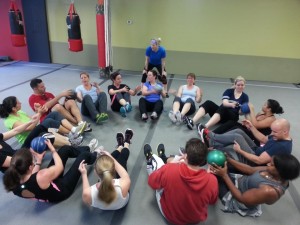Take a step back in time to the Stone Age. What did people eat 10 thousand years ago? They ate what they could hunt and gather. This included foods such as wild-caught fish; grass-fed meats; eggs; vegetables; fruits; berries; seeds; roots; healthy oils; nuts; and drinks such as water, green tea, and coconut water.
Now jump to the 21st century. Could such a diet make you healthy? Could you lose weight with it? Proponents of the Caveman, or Paleo, Diet would answer these two questions with a resounding yes. They believe our bodies are genetically made to eat the way our Paleolithic ancestors did. So they insist that if cavemen didn’t eat it, you shouldn’t either. This diet believes that a balance of wild game and plant-based foods provide optimal health and lower one’s risk of disease.
This theory is not without controversy. Is the Paleo diet a smart choice for you? What are its strengths and weaknesses? Let the Huntington personal training center explain the pros and cons.
The Positives
As far as science can tell, people in the Paleolithic age didn’t suffer from the same health conditions we have today. Obesity, cardiovascular disease, cancer, type 2 diabetes, osteoporosis, acne, autoimmune diseases, and loss of eyesight weren’t on their radar. What’s causing these chronic diseases that plague so many? Is it the processed foods and refined sugars so typical in the Western diet?
Advocates of the Paleo diet claim the diet works to control blood sugar, fill you up, lower your risk of heart disease, reduce inflammation, lower blood pressure, reduce acne, and prevent weight gain.
Nutrition experts agree that whole, unprocessed foods are the basis for a healthy diet. Therefore, the Paleo diet sounds ideal: it’s high in protein, fiber, potassium, vitamins, and minerals; moderately high in monounsaturated, polyunsaturated, omega-3, and omega-6 fats; and low in carbohydrates and sodium.
Besides eating like cavemen, the Paleo diet encourages you to be physically active like the cavemen of old. They were hunters and gatherers, constantly on the move in search of food, water, and shelter. While these needs are more easily met today, regular exercise is just as important to your health.
The Negatives
What could be bad about a diet based on whole foods? First of all, the Paleo diet completely eliminates two major food groups. Along with legumes, peanuts, refined sugars, potatoes, salt, processed foods, and refined vegetable oils, you are not supposed to eat any dairy or whole grains. Unfortunately, these two food groups are high in nutritional value and contribute to a balanced diet. Without them, it’s very important to supplement with calcium and vitamin D.

Beyond the potential nutritional deficiencies from eliminating grains and dairy, the strict limitations of the Paleo diet make it a hard eating regimen to sustain for a long period of time. Want to eat a sandwich without bread? Lasagna without the pasta? That’s what you’ll be doing if you go Paleo. And there’s not much variety in the diet. Eating grass-fed meats, wild-caught fish, organic produce, nuts, and seeds may get old after a time. Add to this the difficulty accessing certain foods and the cost of wild game, and maintaining a regular Paleo diet may be difficult or even impossible.
But there are things that we can all learn from the Paleo diet. Eating natural, organic foods when possible and exercising regularly can indeed do the body good.
This blog was submitted by the Huntington Personal Trainer from Fit Body Boot Camp Huntington.
